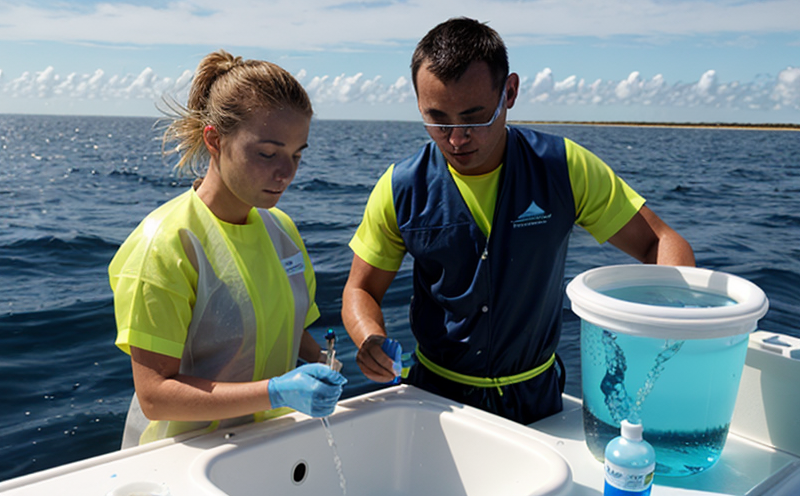ISO 11905-1 Total Nitrogen Test in Seawater
The ISO 11905-1 standard provides a robust framework for the determination of total nitrogen content in seawater. This test is critical for environmental monitoring, water quality assessment, and compliance with regulatory standards such as those set by the U.S. Environmental Protection Agency (EPA) and the International Maritime Organization (IMO).
Seawater contains a variety of dissolved substances, including nitrates, nitrites, organic and inorganic nitrogen compounds. The presence and concentration of total nitrogen are key indicators for assessing marine ecosystem health and pollution levels. This test ensures that seawater is safe for various uses, such as drinking water production, aquaculture, and recreational activities.
Our laboratory adheres strictly to ISO 11905-1 guidelines, which mandate the use of appropriate sampling techniques and analytical methods. We employ state-of-the-art instrumentation and highly trained personnel to ensure accurate and reliable results.
The testing process begins with proper sample collection, which involves the use of sterile containers to prevent contamination from external sources. The collected seawater is then transported under controlled conditions to our laboratory for analysis. Here, we utilize advanced analytical techniques such as flow injection analysis (FIA) or continuous flow analyzer (CFA), both of which are capable of providing precise and rapid results.
Once the sample preparation is complete, the test proceeds with a series of steps that include digestion, reduction, and colorimetric determination. These methods ensure accurate quantification of total nitrogen in seawater. The final step involves comparison against established reference values to determine compliance with relevant standards.
The importance of this test cannot be overstated. Accurate measurement of total nitrogen helps governments and organizations monitor environmental changes and implement necessary corrective measures. In the context of maritime activities, understanding nitrogen levels is crucial for preventing eutrophication—a phenomenon where excessive nutrients in water bodies lead to harmful algal blooms.
| Step | Description |
|---|---|
| Sample Collection | Collection of seawater in sterile containers under controlled conditions. |
| Transportation | Seawater samples are transported to the laboratory for analysis. |
| Preparation | Digestion, reduction, and colorimetric determination of total nitrogen content. |
| Analysis | Comparison against reference values to determine compliance with standards. |
Applied Standards
The ISO 11905-1 standard is widely recognized for its stringent requirements and reliability in measuring total nitrogen content. This standard ensures that the testing process adheres to international best practices, providing consistent results across different laboratories.
In addition to ISO 11905-1, our laboratory also complies with other relevant standards such as EPA Method 320 and EN 14867. These standards further enhance the accuracy and precision of our testing procedures.
Our commitment to quality is reflected in our adherence to these international guidelines, ensuring that we deliver accurate, reliable results every time. This helps clients make informed decisions regarding water quality management, environmental protection, and compliance with regulatory requirements.





